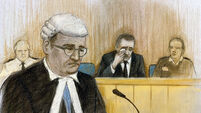70,000 victims of war between rebels and state, says Peru truth commission
Although the volume report, delivered to the government on Thursday, blamed the guerrillas for the majority of the deaths, it also cited abuses by security forces, responsible for up to one third of the killings.
The commission was formed in June 2001 to shed light on the atrocities that occurred from May 1980 to November 2000 during the fighting between government security forces, leftist rebels and militias. Most of the fighting occurred in remote Andean areas.
The commission said 69,280 people disappeared or were killed and the turmoil fed on deep-seated racism and a fundamental misunderstanding of the highland Indians.
“Three of every four victims of the violence were peasants whose mother tongue was Quechua, a part of the population historically ignored, even ridiculed, by the state and urban society,” said commission president Salomon Lerner.
Conservative politicians criticised the commission for digging up the past and the military is unhappy with plans to name some 100 individual officers. Despite the defiance of army generals, military experts predicted the findings would be accepted.
Violence erupted in May 1980 when the Shining Path, a Maoist-inspired rebel movement began terrorising peasants to support it in overthrowing the government. The army, baffled by this strategy, believed many villages supported the guerrillas. Both sides attacked villages, killing unarmed men, women and children, peaking in 1983-84 with nearly 20,000 deaths.
By the late ’80s, the Shining Path brought their campaign to Lima and other urban areas but violence dropped off significantly with the capture of Shining Path founder Abimael Guzman in 1992.













